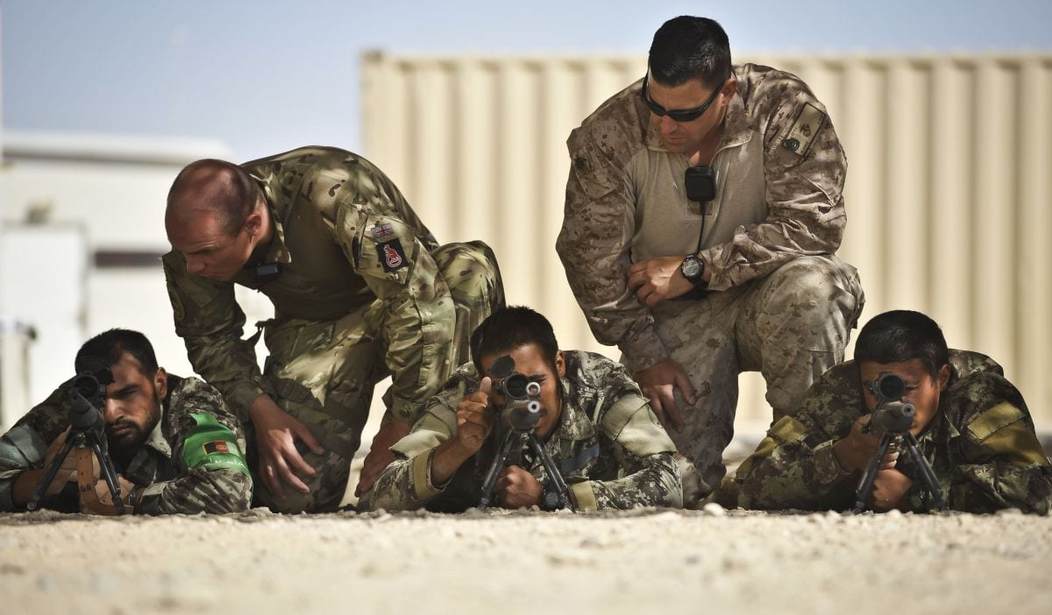There’s been another “Green on Blue” attack in Afghanistan as an Afghan soldier opened fire on a group of U.S. servicemen, killing two and wounding two others.
It’s the second time this year that an incident involving an Afghan soldier has resulted in the deaths of Americans. In March, three U.S soldiers were shot and wounded in another apparent insider attack at an Afghan military complex in Helmand Province.
What is particularly worrying about this attack is that it occurred in the eastern Afghanistan province of Achin, a stronghold of ISIS forces in Afghanistan.
Members of the Army’s 75th Ranger Regiment and 7th Special Forces Group have been operating in Achin, which has become the scene of worsening violence as U.S. special forces and elite Afghan commandos intensify their efforts to take out ISIS loyalists there, a group known as ISIS Khorasan or ISIS-K. Saturday’s attack comes, too, as the Trump administration debates deploying up to 5,000 additional American troops to step up such counter-terror operations and help break what senior military leaders have declared a stalemate in the 16-year war with the Taliban.
ISIS Khorasan is an affiliate of the Islamic State’s core network in Syria and Iraq. It receives tactical advice and some financial support from outside Afghanistan, but U.S. officials have said it does not appear there’s been an influx of fighters from either country.
An estimated 400 to 700 ISIS-K militants are active throughout Nangarhar and Kunar provinces, officials said in late-April after three U.S. special forces soldiers died in separate incidents there.
Hoping to flush ISIS from its stronghold in Achin, American and Afghan forces launched Operation Hamza in early March. Apart from regular ground battles, the U.S. launched a massive airstrike on an ISIS tunnel complex in mid-April. The attack left upwards of 100 militants dead.
Long War Journal has compiled a detailed history of these attacks by Afghan soldiers on Coalition forces since 2008. It shows that about 15 percent of deaths by Coalition soldiers are the result of these Green on Blue attacks.
Green-on-blue deaths per year, and percentage of Coalition deaths caused by such attacks:
2016 – 4
2015 – 4 – 80%
2014 – 4 – 6%
2013 – 14 – 9.9%
2012 – 61 – 15%
2011 – 35 – 6%
2010 – 16 – 2%
2009 – 12 – 2%
2008 – 2 – less than 1%
The deaths today bring the total for 2017 to two dead and five wounded.
Here are a few incidents from the last couple of years:
March 19, 2017: An Afghan soldier opened fire on U.S. troops as they were training Afghan troops on a base in Kandahar. Three U.S. soldiers were wounded in the attack.
Green-on-blue attacks in 2016:
Oct. 19, 2016 A gunman wearing an Afghan army uniform killed one American soldier and a civilian and wounded three more Americans in an attack in Kabul.
May 7, 2016: Two Afghan soldiers killed two Romanian soldiers and wounded another during an attack inside a base in Kandahar. The Romanians were were training Afghan forces at the time of the attack.
Green-on-blue attacks in 2015:
April 8, 2015:
An Afghan soldier killed a U.S. soldier and wounded two more in an attack at the governor’s compound in Jalalabad, Nangarhar. The attacker was killed after U.S. troops returned fire.Jan. 29, 2015:
An Afghan soldier killed three U.S. contractors and wounded another in an attack at Kabul International Airport. The attacker, who is thought to have been killed, was a guard at the airport. The Taliban said he was an infiltrator.Green-on-blue attacks in 2014:
Sept. 15, 2014:
An Afghan soldier opened fire on ISAF trainers at a foreign military base in the 207 Zafar Army Corps in Farah province, killing a trainer and wounding another trainer and an interpreter before being killed in return fire.Aug. 5, 2014:
An Afghan soldier opened fire on U.S. officers at a key leader engagement at the Marshal Fahim National Defense University in Kabul City. A U.S. major general was killed and 16 ISAF personnel, including a U.S. brigadier general and a German general, were wounded. The attacker was killed by Afghan soldiers.June 23, 2014:
Two U.S. military advisers were wounded when an Afghan policeman opened fire on them as they arrived with troops at the Paktia provincial police headquarters in Gardez. The attacker was killed in return fire. The Taliban claimed the attack was perpetrated by an infiltrator named Naqibullah.Feb. 12, 2014:
Two U.S. soldiers were fatally shot by two individuals wearing Afghan National Security Force uniforms in eastern Afghanistan, and four US soldiers were wounded. During the attack, which took place in Kapisa province, several civilians were also wounded by crossfire. The Taliban claimed the attackers were “Taliban associates.” The two attackers were shot dead by Coalition forces.
The attacks will continue, and now that ISIS is involved, I would expect their fanaticism will infect even more Afghan soldiers than the Taliban. President Trump is exploring the option of sending thousands of more troops to Afghanistan to see if the Taliban’s momentum can be reversed. As it stands now, the Taliban is winning. They are retaking vast swaths of eastern and southern Afghanistan and unless the military tide can be turned. it appears inevitable that they will overcome all resistance in a matter of a few years. Arming and training the Afghan army is not going as fast or as well as anticipated, which makes it a necessity for U.S. troops to try and retrieve the situation.
If you can’t trust your allies enough for them to carry guns in your forces’ presence, how can they trust you to train them well enough to confront a determined enemy?










Join the conversation as a VIP Member